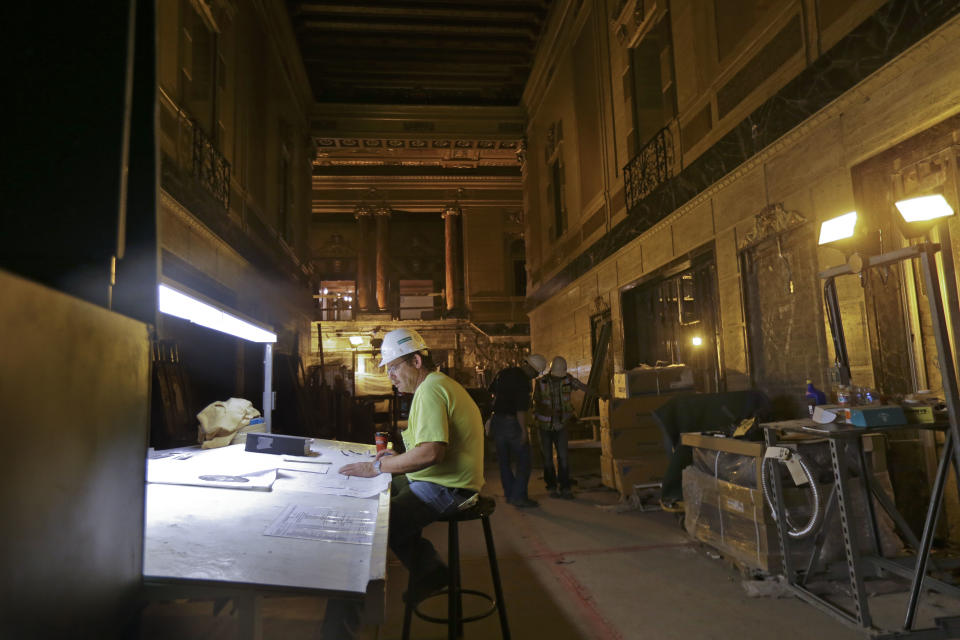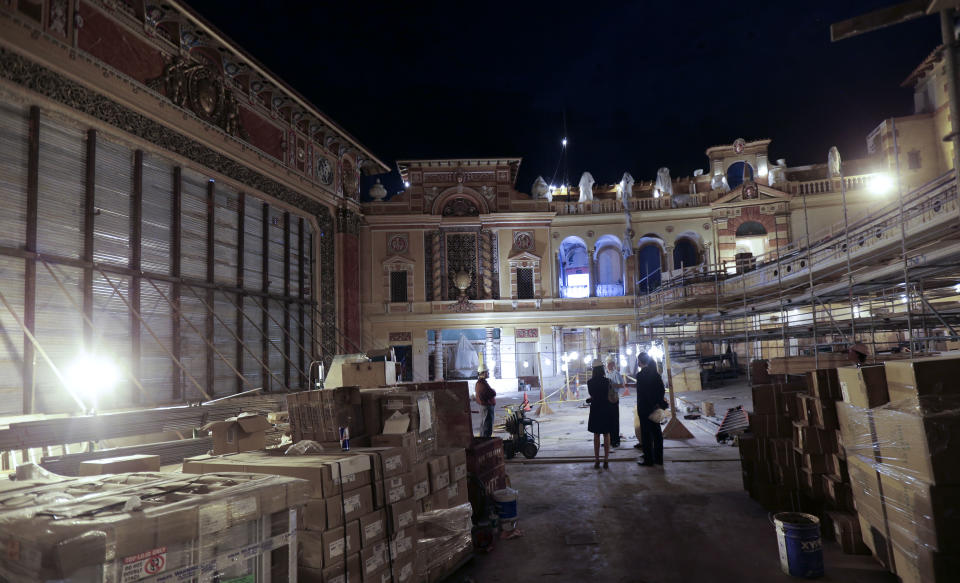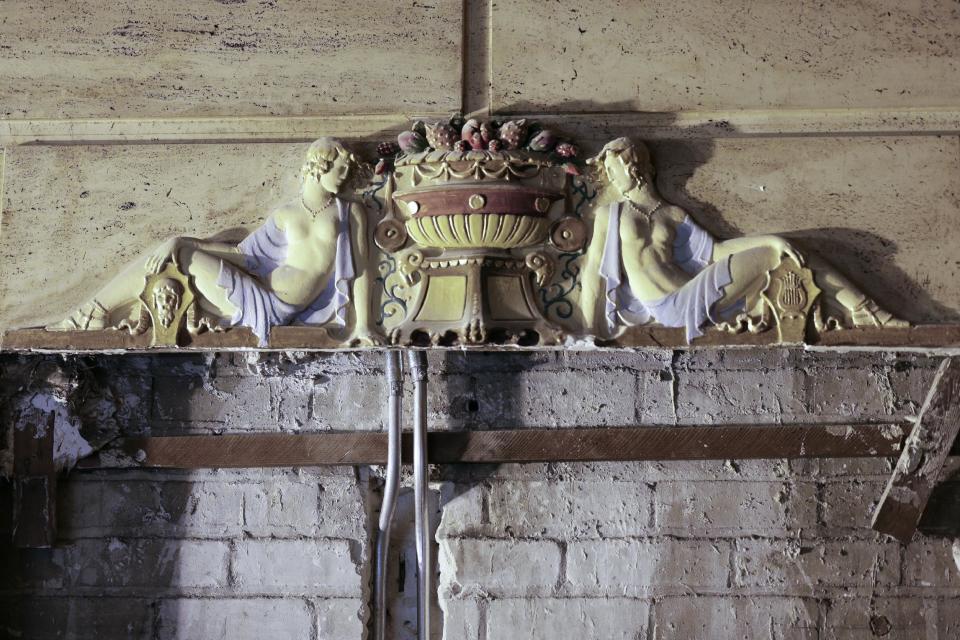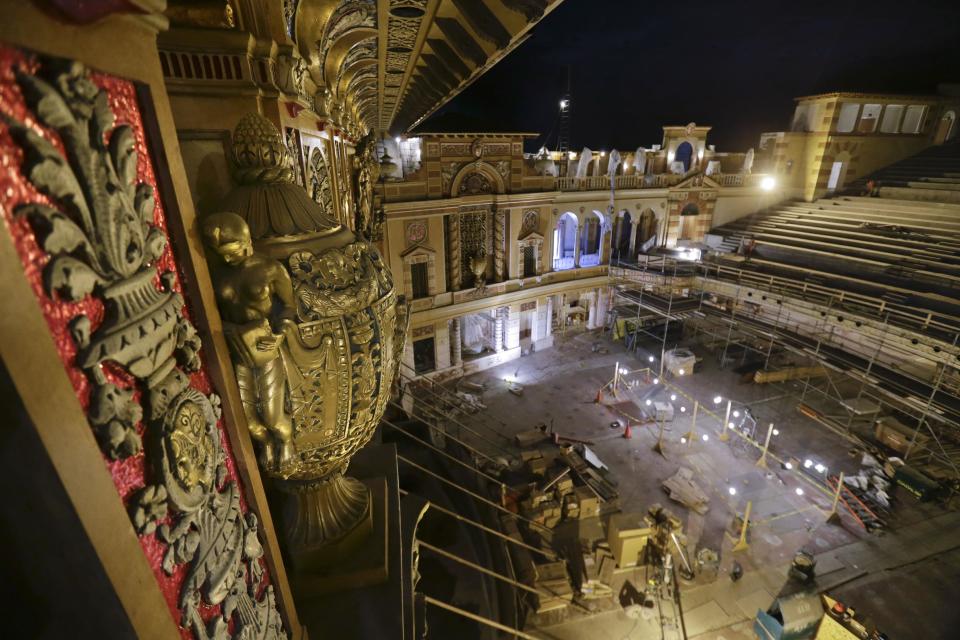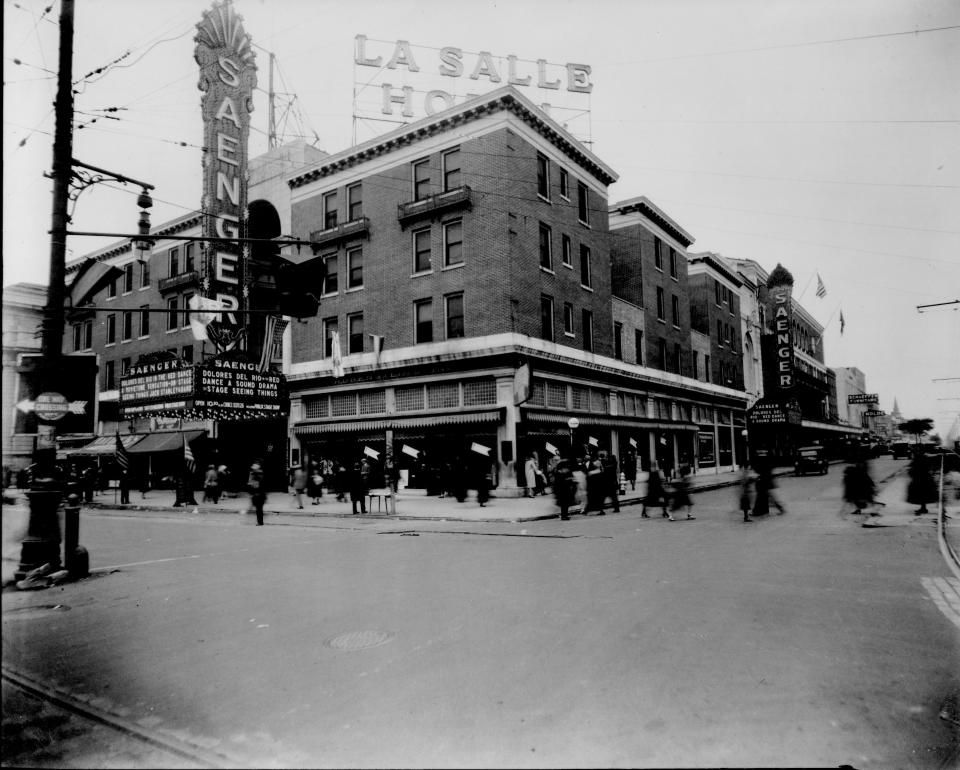Katrina-damaged La. theater goes for 1927 glory
NEW ORLEANS (AP) — With its grand arches, intricate plaster moldings, faux facades suggesting a centuries-old European villa and blue domed ceiling dotted by pinpoint lights, the Saenger Theatre was typical of the opulent movie palaces and playhouses built around the nation in the 1920s.
But bits of its flapper-era splendor were sacrificed over the decades as various owners tried to roll with changing times.
Chandeliers were sold. A clunky escalator was installed and the balcony walled off to form a second movie theater in the 1960s — a pre-multiplex-era architectural affront that was undone in the '70s.
"They were just trying to hang on as best they could," Errol Laborde, local magazine publisher and New Orleans historian, said of the various changes.
Although diminished, the Saenger's grandeur endured. It remained a venue for concerts and touring theatrical productions until 2005, when water from levee breaches during Hurricane Katrina rose shoulder deep in front of the stage, deteriorating plaster above and inundating electrical equipment on the floors below.
As is the story with much of the city, the Saenger's recovery has sometimes dragged, slowed by complex financing. In 2010, its marquee announced a grand re-opening in 2011. A spring 2013 deadline also has been missed.
But, when the touring production of Broadway's "The Book of Mormon" takes the Saenger stage for a grand re-opening in October, it will mark the end of a long-sought and meticulous $51 million renovation, restoration and replication effort that will bring a long-missed landmark to its pre-Katrina health and recreate some of its 1927 glory.
"To have it restored, again, not the way it was but the way she always should have been, is a theme that symbolizes what we're trying to do with rebuilding the city of New Orleans," Mayor Mitch Landrieu said this month as he joined other city officials for a ceremony marking the installation of a key steel beam.
"It will look clean, well kept, but with a patina of 80 years of life," said David Anderson, a principal in the Saenger Theatre Partnership, which donated the theater to a city-established nonprofit corporation in a complex redevelopment and operating agreement. A subsidiary of the partnership, ACE Theatrical Group LLC, will operate the theater. Anderson was interviewed last week while giving a tour of the facility, where much of the work remains masked by networks of scaffolding and a layer of construction dust.
It will be hard for the uninformed to tell what's new from what's old. A rounded marquee that jutted out over the Canal Street sidewalk is a childhood memory for many New Orleanians who came of age since the early 1960s. It's gone now, to be replaced by a flatter marquee and a huge vertical sign, recreated from plans and pictures that survive from the '20s.
Some of the chandeliers lighting the entryway and mezzanine will be re-creations as well. But some will be original equipment, discovered blocks away in a French Quarter antique shop.
"We were skeptical," Anderson said of theater officials' reaction when told that some of the original chandeliers were at the shop on Royal Street. But the owner had proof: "He showed us a bill of sale from the company to his father."
Replication efforts included microscopic examination of paint scrapings to recreate the bright golds and iridescent pinks that originally graced the entryway ceilings and walls and filled the spaces around the Italian Renaissance-styled statuary, intricate ceiling medallions, and bas relief sculptures of warriors on horseback and mythological sea creatures.
The 1927 facade will mask modern technology: The stars in the ceiling will be LED lights. An expanded, deeper stage will be home to state-of-the-art theatrical equipment.
City officials say funding for the Saenger's comeback includes roughly $15 million in federal and state grant money and more than $35 million in complex private investment facilitated by state and federal tax credits.
Laborde said he hopes the rebirth of the Saenger, in an area that has grown economically moribund despite its proximity to the French Quarter and the city's central business district, heralds a time when going to a show will more closely mimic a New York experience. "I just hope sometime this whole area can develop into more of a theater, more of a pedestrian district, where there are little cafes along the way where people can go before shows," Laborde said.
Landrieu, at the beam installation ceremony, said the Saenger's rebirth is part of the rebirth of the area. "It's about renovating the entire downtown of New Orleans, which hasn't looked like this in the past 40 or 50 years," he said. "The economic impact is going to be huge."
